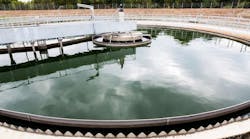The California State Water Resources Control Board today (Dec. 19) approved regulations allowing for “direct potable reuse” of water, allowing purified wastewater to be blended directly into a community’s existing drinking water system.
It may take years for the practice (DPR) to actually happen. The regulations need to be accepted by the state’s Office of Administrative Law, expected middle of next year, and then utilities would need to build the systems to treat and add the effluent to drinking water systems.
“We’ve been working on these regulations for over 10 years now, making sure that it’s absolutely protective of public health,” Darrin Polhemus, deputy director of the board’s division of drinking water, said at the Tuesday hearing and quoted by The Hill.
This won’t be the first direct reuse of wastewater in California, nor in the country. Utilities in the Golden State and around the country have long practiced indirect potable reuse, the injection of treated wastewater into environmental buffers — such as groundwater aquifers or lakes — before its discharge into a public system, said The Hill.
Colorado adopted DPR regulations in January, although no utilities have used the practice so far. Texas published regulatory guidance for DPR on a case-by-case basis, and Florida and Arizona are working on similar rules, according to The Hill.
“California is a pioneer in purifying recycled water for use in drinking systems,” said WateReuse Assn. “In the 1960s, the Montebello Forebay Ground Water Recharge Project in Los Angeles made history by recharging a drinking water aquifer with purified recycled water. Today, communities across the state use purified water to recharge groundwater, reservoirs and rivers, in a practice known as indirect potable reuse. The new regulations create additional flexibility by allowing advanced purified water to be added directly into drinking water systems where it isn’t feasible to first blend it into a larger body.”
The Water Resources Board staff were directed to report back in a year with updates about evolving science and technologies that could impact the implementation of these rules.


